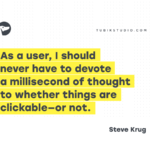Creating a Marketing Plan Isn’t Scary
Creating a marketing plan doesn’t have to make your flesh crawl, your spine tingle, and your heart beat uncontrollably. It’s not that scary. What’s scary is what will happen to your self-storage business if you don’t create a comprehensive marketing strategy that will attract customers and drive results.
According to Investopedia, 14% of small businesses fail because of poor marketing. Many small businesses don’t have the time, budget, or experience needed to create a dynamic marketing strategy. They go with a tactic that worked for a different type of business or they depend on their instincts. The outcome is a series of programs that don’t work as well as you were hoping.
Read below to learn how to create a plan that will build relationships, generate leads, and raise awareness of your brand.
Creating a Marketing Plan from Scratch
Tip 1: Know Who You are as a Business
You need to focus on your uniqueness. What do you offer that your competitors don’t? What separates you from your competition? Think about what hasn’t been done before and try to put a unique spin on your idea. Is there a service that you can provide that your competitors haven’t thought of? Maybe your property takes a more personal approach with a “concierge” service for your tenants. Or, perhaps, along with selling moving and packing supplies, you sell shelving and containers to help people organize their storage units.
Tip 2: Determine Your Target Demographic
Don’t waste time and money trying to reach a wide segment of people. Focus on your ideal customer.
- Who are they? Think about age range. The older they are the longer they stay. For example, the average occupancy for millennials is 400 days, for baby boomers it’s 2½ – 3 years, and for the silent generation it’s around 4 years.
- What do they need? Think about their reasons for storage. Are they downsizing, upsizing, starting a business, or storing vehicles?
- Who do they use now? Find out which of your competitors is attracting customers.
- Why would they choose you? What makes your facility more desirable than your competitor’s properties?
- Where do they “live” online? If you’re not sure, start with Google by entering the name of your industry + forum. Search Facebook groups and LinkedIn. Scan tweets on Twitter.
Remember, your audience wants to have their questions answered and their problems solved. Be the solution.
Tip 3: Know Your Competitors
“There is nothing like a good competition to push you even further. Embrace competition – you might surprise yourself!” Peter Economy
Don’t let this intimidate you. You already know that there are companies out there doing the same thing as you. This means you have to bring your “uniqueness” to the next level. You have to understand your competition so that you can understand how your products and services measure up. Try a “secret shop” to get additional information. Don’t be disheartened by your competitors’ success. If there’s room for them, there’s room for you. For inspiration, read You Can Compete in a Crowded Marketplace,
Tip 4: Set Attainable Goals
What targets do you want to hit? Of course you want to make more money. But goals are more achievable if you give them a set target to measure progress. Do you want to increase activity by 2 rentals per month? Or by 5? Maybe you want to increase occupancy by 2%. Focus on the markers that you want to set this year. You want your goals to be bold and enthusiastic but not so lofty that you get discouraged.
Tip 5: Set Your Marketing Budget
You knew this was coming. Don’t mistake your marketing plan for your business plan. Your marketing plan focuses strictly on marketing-related activities, not detailed financials. You’re going to allow for the basics, such as a website and hosting, and then you’ll start building your brand on social media. And, don’t forget about content marketing. Finally, you need to figure out the cost of all of this and where the money will come from. This is not fun, but it’s important to be honest with yourself. Things will get better.
Outline Your Core Marketing Strategies
Now that you understand the basics It’s time to get down to the business of your marketing strategies. Here is a fundamental outline of what you need to build a healthy business presence.
- Website – Your website must be user-friendly. Visitors should be able to easily locate facilities; view features; see a complete list of unit types; sizes and pricing; and find helpful tips and answers to FAQs. You also need to integrate real time reservations and online payment options.
- SEO & Content Marketing – Success with SEO is dependent on content that satisfies the needs of audiences. Your content should be optimized not only for search engines, but for humans. It has to be relevant.. Your content should be easily readable so that your audience can “make meaning” out of the text, but it also needs to be SEO-friendly. The Google algorithm searches for important words at specific places on your web page or blog post.
- Content Marketing – Content Marketing is not a hard sell; it’s an informative tool to educate and answer questions:
- Website – Your website should inspire trust, offer value, and showcase you as an industry authority. It should be a user-friendly, definitive resource where customers can easily find answers to their questions.
- Blog – Blogs should be another source of education and information for your audience. They help with search engine optimization, humanize your brand, and give people a reason to return to your site.
- Other Content – Other content that will aid in your marketing efforts are: email marketing, infographics, videos, podcasts, case studies, user generated content, courses, and contests.
- Content Marketing – Content Marketing is not a hard sell; it’s an informative tool to educate and answer questions:
- Local Listings – Google My Business (GMB) helps you to reach and engage with local customers. Claim your business so that your information appears on Google search and maps.The best part… It’s free!
- Reputation Management (Reviews) – According to HubSpot Research, 60% of consumers believed customer reviews were either trustworthy or very trustworthy — meaning that businesses that can accumulate positive reviews had a good chance of them helping a customer make a purchase decision. Click the above link to find great ways to get reviews.
- Paid Advertising – There are a variety of paid advertising strategies available. Facebook Business Page and Google Ads are the two that are likely to yield the best results. Facebook is your solution for growing brand awareness, and Google Ads is the best tool for lead generation and getting discovered on mobile devices. For optimum results, be sure to link these platforms to a dedicated landing page.
- Social Media Marketing – Sixty-nine percent (69%) of adults use social media. First, you need to pick your platforms from among Facebook, Twitter, LinkedIn, Instagram, and Pinterest. Think about your demographic and start with only two platforms. When you set up your profiles, fill them out completely. You want your visitors to be able to find out more about you and your services. No more than 20% of your content should be self-promoting.
- Drive-by Curb Appeal – When you hear the phrase “curb appeal,” you think about the exterior look of a property. That is important, but “curb appeal” also means the ability of a potential customer to use Google Maps to drive the neighborhood around your property. For more information check How Do I Add My Business to Google Maps.
- Community Marketing – A community marketing program seeks to engage with prospective customers on a very local level in the community around the physical store location. This strategy directs promotional messages to the local population rather than the mass market. To learn more, click on the above link.
Creating a marketing plan isn’t scary – unless your afraid of hard work. Understand the fundamentals, implement the core strategies, and you’ll be able to build a plan that is perfect for your business.


